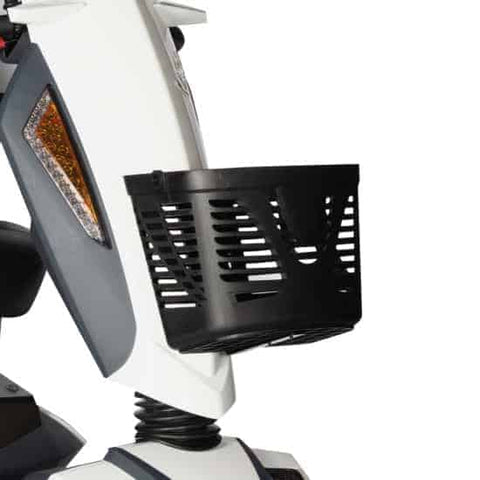Do you have a love for travel, but require a wheelchair to get around? Have you ever wondered "Can I take my wheelchair on the plane?" Well, great news! You can take your wheelchair on the plane!
So, what are the requirements? Well, here we're going to take a look at the ins and outs of traveling on the plane with your wheelchair and answer that for you. From batteries, to size requirements and checking in, we've got you covered!
What You Need To Know
Batteries for Electric Wheelchairs
Not all batteries are suitable for plane travel, but luckily we have a range of travel wheelchairs equipped with plane-safe batteries. They come with a Material Safety Data Sheet (MSDS) which you will be required to present when travelling.
In order to carry the battery with you, you will also need to declare it as dangerous goods. QANTAS has a guide here on what to do. You must declare your battery upon check-in, but it is best to declare before this. You can request airline approval online to make the process a little easier (online request available in the link above). If you are flying with Jetstar, you will still need QANTAS approval. It is best to discuss this with your airline and check their requirements in advance so that you are prepared.
Size Limitations
Size limitations and the number of mobility aids (wheelchairs and scooters) allowed on any given flight can vary depending on the airline and the aircraft itself. You will need to check these requirements with your chosen airline, to ensure that you can travel with your wheelchair.
Flying With Your Wheelchair

Booking
As you might already know, you will need to give the airline at least 48 hours notice before your flight if you need to bring your mobility aid or need any extra assistance. If they don't have enough notice, they may not be prepared and be unable to accommodate for your needs.
As with anything, communication with your airline is key. They will ask you questions about your mobility aid to determine whether you can take it on a particular flight or aircraft, and also to determine what kind of assistance you may need when without your mobility aid. Be sure to have all the information about your mobility aid on hand. This includes the height, weight, whether it is collapsible and information about the battery if there is one. You can find the relevant information under the specifications of each product on our website.
Checking In
Firstly, it is recommended that you arrive at the airport at least 60 minutes before your flight if you are travelling with a wheelchair. This may vary with different airlines, so be sure to check with your airline. Large mobility aids such as wheelchairs and mobility scooters will generally need to be checked in with your checked baggage. If you have communicated with your airline they will be aware of this and should be able to assist you with a wheelchair after you have checked in, if required.
It is generally a good idea to call ahead and confirm with the airline, even if you have already done so while booking.
Airlines will also usually allow up to two mobility aids at no extra cost, but again, it is best to check first.
Boarding
If required, you may be assisted by staff to transfer to an aisle wheelchair. You may also bring on board with you a collapsible walking frame, crutches, canes and prosthetic devices, so long as they meet the size and weight requirements in order to fit in the cabin. These size and weight requirements will be the same as for your carry-on luggage.

Disembarking
First thing's first, you can request staff to assist you to grab any mobility aids such as walking frames from the overhead cabin storage. If you need further assistance, staff will assist you in disembarking the aircraft. They will generally provide different types of assistance (such as a wheelchair or lift), but it is best to discuss this with them when booking so that they are prepared to facilitate your needs.
Depending on the airport, you may be able to collect your wheelchair from the gate, but if not you will be able to collect it from the baggage claim area, where staff will assist you.
Our Top Picks
Wheelchairs to Take On The Plane
Now that we've covered the basics, let's take a look at some great travel wheelchair options. Take your electric wheelchair with you wherever you go and travel the world!
The Heartway P35 Chase
The Heartway Chase is the newest portable electric wheelchair on the market, and it's here to start a revolution. It's the smallest on the market but it's also sturdy, with a carbon fibre and alluminium alloy frame. Weighing in at only 22.8kg and with a weight capacity of 115kg, it's perfect for travel! Start your adventure with this revolutionary electric wheelchair.

The Companion 115
The KD Companion 115 is an amazingly portable travel electric wheelchair. With comfortable gel cushions and a weight of only 19.2kg, it's a great product to take with you on flights. This is one of our most popular portable electric wheelchairs. Come and check out what all the fuss is about!

Now that you're armed with information and some great product recommendations, why not start your adventure by contacting our friendly team to have a chat about our portable range of mobility aids? Don't let anything hold you back! Get on out there and go on an adventure!


